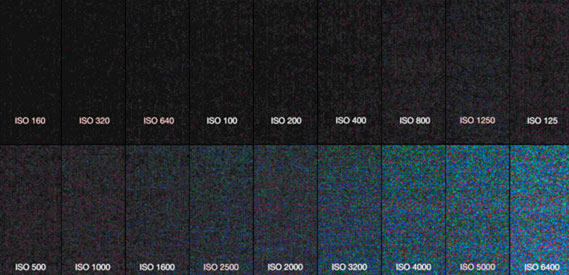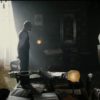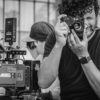Today is the announcement of the new Canon S35 camcorder in Los Angeles. I’m very excited, though I bought a Sony F3 a few months ago. There are simply no details out yet, but Canon Rumors published some new rumors today: Name: Canon EOS 300C EF and PL Versions Dual CF Card Slots Built in ND Super35 Sensor HDMI and HDSDI out Hot shoe mounted monitor w/ 2 XLR ins 1920 x 1080 resolution Also is able to record out of SDI I’ll keep you posted today on my Blog, Twitter and Facebook account!
Letus, known from their successful 35 mm adapters before the DSLR revolution has begun, has developed a completely new system for HDSLRs. In a strong partnership with Shane Hurbut they are now offering a very interesting and modular system. I recently thought there is no space for an additional manufacturer of rigs and accessories. Letus tried it in the past, for example with their Letus Hawk Viewfinder. Although it didn’t seem to be an huge success, there was no wow effect in the community, it wasn’t something mind blowing, because we already have seen these things from competitors like Zacuto. Though the quality was quite good, I personally own a Letus Hawk Viewfinder, but it wasn’t something spectacular. The optics and the built quality is superb! One of the best viewfinders on the market, but it didn’t blow me away… Letus introduced the new Letus Master Cinema Series in Los Angeles last week and it looks so good! Of course I haven’t tested the rigs yet, but the first look is quite impressing! Don’t know if the handles are built solid and strong! Looks a bit weird. I hope I get my hands on one of the rigs soon letting…
Canon announced the Canon 1D X DSLR camera today. We have waited so long for the next generation HDSLR, and this one has some great improvements, though I hope the Canon 5D Mark III has some more features like 1080p at 50 and 60fps or higher! Now we have Timecode (amazing, could be possible to sync 3D footage with it), manual audio levels (also during recording), ISO range for movie from ISO 100 to 51,200 and no more 12 minute clip length. With the new model it is possible to shoot up to 30 minutes. Sadly the EOS-1D X still records movies using the H264 codec, but the compression type has changed. Now there is a “IPB” or a “ALL-I” compression. The price is quite high, will be in the $7,000 range! Here is the boring pre-press release: TOKYO, October 18, 2011—Canon Inc. and Canon Marketing Japan Inc. today announced the introduction in Japan of the new EOS-1D X digital single-lens reflex (SLR) camera offering a high level of performance to satisfy the demands of professionals in such fields as sports photography, photojournalism and studio photography. To date, Canon has developed its top-of-the-line digital SLR cameras through the 1Ds series,…
Today I noticed a dead pixel while editing a corporate film for a client. I asked on twitter if there is any solution to fix this dead or hot pixel. @GEPD on Twitter sent me a link to a short clip on YouTube, which is a great tutorial for people like me. Today I was the lucky guy and it worked out perfectly. You need some luck, it’s like a lottery, sometimes it works, sometimes not… If you have any problems with your sensor (dead pixels, hot pixels), follow these instructions, it may help you! Good luck and a huge thank you to @GEPD on Twitter!
I have to admit, that I have never used any optical viewfinder on my DSLR. Most of the time I focus with the small back display of my SLR camera. I read on many blogs in the past, that a viewfinder like the Z-Finder is an absolutely essential tool for DSLR filmmaking. Not for me! For my personal taste it is easier to focus without any optical viewfinder. The electronic zoom of the Canon DSLR‘s helps me much getting all my objects in focus. This isn‘t usable for „run and gun“ shootings, but for most of the jobs it is okay. Don‘t get me wrong, the Z-Finder is a great piece of kit, but for my taste the resolution of the video capable DSLRs is too low for a loupe. I always can see every single pixel of the lcd and this issue makes it harder to find the correct focus. This is history now! I have a Cineroid EVF and it has become an essential tool for my daily work behind the camera. Since then my camera work has fundamentally changed. I don‘t want to go shooting without an EVF! I‘m using it for my DSLR‘s, but you also can…
Philip Bloom, Nino Leitner and me are going to do a DSLR/AF101 workshop tour in Germany and Austria this August. It won’t be beginners (a bit of the basics are still included). Workshop content: Basic Camera settings (shutter speed, picture profiles, white balance…) Pros and cons of DSLR cameras with video function and how to deal with their downsides Professional sound recording for DSLRs Gear Hands-on, which accessories are important (you will be able to try equipment on location) Introduction to large chip camcorders (AF101, F3 …) Interview techniques Basic lighting on set Shooting techniques (camera movements, framing, shot size, crossing the line…) Intensive timelapse training including motion control and HDR Practice Part post production workflow (mainly Final Cut Pro, partly Adobe CS 5.5, Basic Color Grading) The workshops will be held in English, but if need Nino Leitner and me will translate everything you don’t understand. The intensive course costs € 299 for early bookers (including VAT). This special rebate only runs through June 30th and is only valid for the first 12 attendees to sign up. After that, the workshop price will increase to € 349 (including VAT). From experience we can tell that our workshops are booked…

My twitter buddy Andrew Schär made this informative test, which shows you the best ISO settings for your Canon DSLR in video mode. He used a Canon 60D with an APS-C sensor (the same sensor is in the Canon 550D (T2i), Canon 600D (T3i) and Canon 7D). If you are shooting video with your DSLR you should use the following ISO settings: 160, 320, 640, 100, 200, 400, 800, 1250, 125, 250, 500, 1000, 1600, 2500, 2000, 3200, 4000, 5000, 6400 I’ve always used these settings. I start at 160 ISO, then 320, 640, 1250, 1600… You can follow Andrew Schär on twitter and Vimeo!

It’s finally out: The Technicolor CineStyle Picture Profile for Canon DSLR cameras! © Vincent LaForet – All Rights Reserved I’m always shooting with a flat picture profile, which I can manually set directly in the camera (Sharpness 0, Contrast -4, Saturation -2, Color Tone 0). Now there is a much better solution available. I’ve seen the Technicolor Picture Profile at NAB and was really impressed. Now they released the free Picture Profile on their website. Yes, it’s free! Jump ahead to get more info about this picture profile. After loading the profile on your camera, you will achieve much more dynamic range. It’s a perfect choice for any application, e.g. Imagefilm, Productvideo, Documentary or any Commercial. The latitude improvement is significantly. It works on a Canon 7D, Canon 60D, Canon 550D (T2i), Canon 600D (T3i), but it was mainly developed for the Canon 5D Mark II! More ressources for additional information on blogs: Vincent LaForet Zech’s Camera How to load Technicolor CineStyle into your Canon camera: Ensure that EOS Utility v2.6 or later is installed on your computer Download the Technicolor CineStyle Picture Style file using the link on Technicolor website Connect your camera to your computer using the appropriate…
Last year I blogged about a Sony prototype, which looked like a cube. Now Sony has announced the series version NEX-FS100. It seems to be the small brother of the Sony F3. The Sony NEX-FS100 can record up to 50 frames per second in 1080p. Sadly the camcorder has no built in ND-filters and there’s no HD-SDI output. These two features are part of the direct competitor from Panasonic: The AG AF 100/101. The Sony NEX-FS100 will have the Sony E-Mount, a clean HDMI output – you will get 4:2:2 HDMI and a timecode signal out of it. Furthermore it has all the great inputs and outputs we want to have for our HDSLR’s. You will find 2x XLR inputs, zebra, peaking and up to 50 frames per second at 1080p. The Sony NEX-F100 records in AVCHD codec at a maximum of 28 MBit per second. It has a S35 sensor, which is quite good, it has the same size like a 35mm film frame. The Panasonic AG AF 100/101 has a smaller sensor and the crop factor of 2 makes it difficult to find a good wide lens. The crop factor of the Sony NEX-F100 will be much better,…
My Twitter and Facebook followers might have seen it already, but the dedicated website for the Majorca HDSLR/AF101 Masterclass 2011 is now online! In 2010 Nino Leitner and I had a huge success with our last masterclass. Now we are happy to announce another one this June, this time together with Philip Bloom, again in the beatiful Majorca, Spain. Philip Bloom, Nino Leitner & me: 3-day-intensive course! This is not your ordinary DSLR workshop, typically lasting less than a day. This is a full 3-day-intensive Masterclass, teaching you absolutely everything you ever wanted to know or learn about this cameras. It will be VERY hands-on, you will be shooting for a large part of these days, and we will divide the process into theory, lots of practical shooting & post productions. We are working on the exact schedule and are talking to all our attendees to serve their needs and listen to what they want to learn more about. (The limited amount of places – about 25 – allows us to be very flexible and hands-on.) Apart from gear & cameras, we will be talking a lot about technique as well. In the end, gear is just a tool to…





